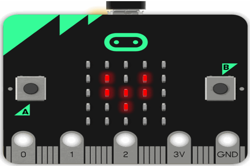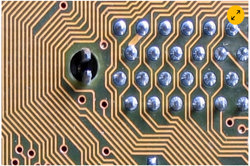10 Reasons to Teach Coding – #Sketchnote by @sylviaduckworth
Here are 10 reasons to teach coding presented visually using Sketchnote. The 10 reasons are brief statements; you'll need to look further for a more detailed rationale and supporting points.
Additional details
| Year band(s) | 1-2, 3-4, 5-6, 7-8, 9-10 |
|---|---|
| Content type | Article or research |
| Format | Web page |
| Core and overarching concepts | Implementation (programming) |
| Australian Curriculum Digital Technologies code(s) |
AC9TDI2P01
Investigate simple problems for known users that can be solved with digital systems
AC9TDI2P02
Follow and describe algorithms involving a sequence of steps, branching (decisions) and iteration (repetition)
AC9TDI4P01
Define problems with given design criteria and by co-creating user stories
AC9TDI4P02
Follow and describe algorithms involving sequencing, comparison operators (branching) and iteration
AC9TDI6P02
Design algorithms involving multiple alternatives (branching) and iteration
AC9TDI6P05
Implement algorithms as visual programs involving control structures, variables and input
AC9TDI8P05
Design algorithms involving nested control structures and represent them using flowcharts and pseudocode
AC9TDI8P06
Trace algorithms to predict output for a given input and to identify errors
AC9TDI10P09
Implement, modify and debug modular programs, applying selected algorithms and data structures, including in an object-oriented programming language |
| Technologies & Programming Languages | other programming languages |
| Keywords | Coding, Programming, Computational Thinking |
| Organisation | Brian Aspinall |
| Copyright | 2016 Brian Aspinall. Free-for-education material. |
Related resources
-

Computational thinking
This comprehensive online guide, provides a background to computational thinking which refers to the skills and approaches used in computing, programming, and digital solutions to analyse problems and determine how to solve them.
-

Object-oriented programming (OOP)
This comprehensive online guide, explores ways the OOP method of programming (or paradigm) is different to the procedural paradigm, which many programmers start out with on their learning journey. This topic introduces objects and how they can be defined and worked with in a computer system.
-

Program design
This comprehensive online guide, explores ways specific algorithms are designed for large applications, considering data and user interface. Learn how algorithms can be expressed as a flowchart and pseudocode, and validated and verified.
-

The Micro:bit Matters
In this article, Gary Stager introduces and explains the BBC micro:bit. He discusses pros and cons of the device, prices, compatible programs to use with it, resources to help understand the Micro:bit and other technological devices on the market.
-

Kids should code: why 'computational thinking' needs to be taught in schools
This article provides a rationale as to why students should be taught 'computational thinking'.
-

What is code?
This article is devoted to demystifying code explaining what coding is, covering programming, programming languages and provides relevant examples.
-

A guide to programming languages for coding in class
This article may help you answer the question: 'With so many programming languages out there how do you choose the one that's right for you and your students?'
